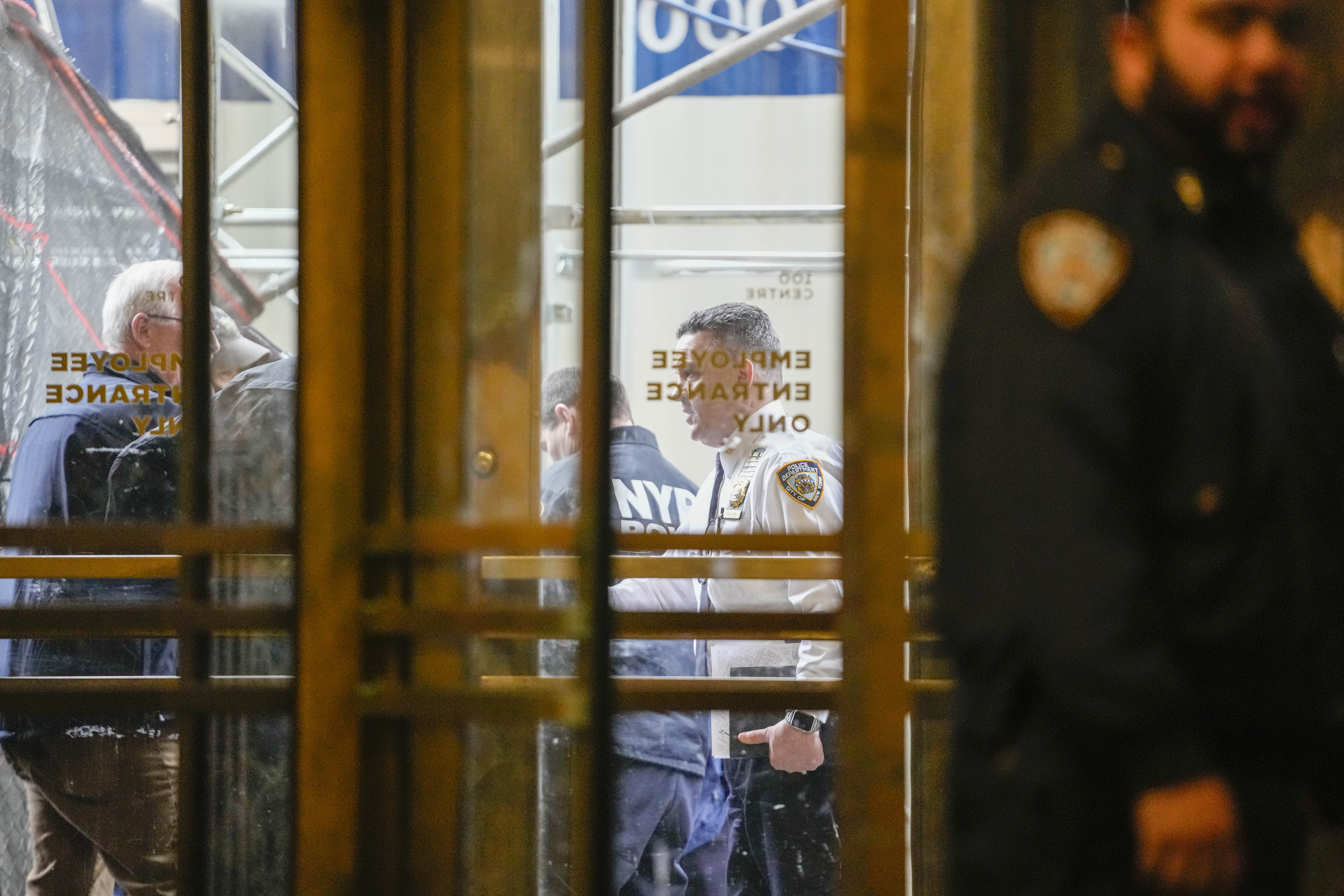Trump case spotlights New York rule barring cameras in court
Some state lawmakers are making a renewed push to change the law amid Trump's high-profile appearance Tuesday in Manhattan Criminal Court.


ALBANY, N.Y. — Former President Donald Trump's arraignment on Tuesday will draw more cameras in Manhattan than perhaps any case in state history. The cameras just aren't likely to be in the courtroom.
Trump's case again highlights how New York has among the most restrictive laws in the nation banning cameras and broadcasts inside the courtroom in most proceedings, a law that dates back to the 1930s. The state Legislature has barely tinkered with it since then. Only Washington D.C. is more stringent on media coverage inside the court, according a report last year by the The Fund for Modern Courts, a nonpartisan nonprofit.
Some state lawmakers are making a renewed push to change the law amid Trump's high-profile appearance Tuesday in Manhattan Criminal Court.
“As the media capital of the world — and the venue for the arraignment of Donald Trump — we must change this outdated law to allow the public to witness trials," said Sen. Brad Hoylman-Sigal, a Manhattan Democrat who sponsors a bill to change the law.
Alina Habba, an attorney who has represented Trump in the past, said on CNN Monday morning that she's not strictly opposed to having cameras in the courtroom.
"I think it depends. I think this whole rigmarole, for lack of better words has been through leaks, which I don't appreciate as an attorney," Habba said.
"I think that transparency is very important. I'm going to leave that decision to the criminal team. But as somebody who has represented the president in court, I like transparency. I think that in certain situations, it's a good thing," she said.
While New York has banned cameras in the courts for a century, New York experimented with a change from 1987 and 1997. But while the limited allowance of electronic media coverage was applauded, it was not turned into a permanent law by the state Legislature.
The law is not unlike federal courts that prohibit video coverage of trials, and even the U.S. Supreme Court limits its oral argumentsto an audio livestream.
Still, New York judges have some discretion to allow cameras in the courtroom. The law does not prohibit coverage of trial court proceedings when witness testimony is not being taken — so a judge could rule to allow for videos and photos for parts of Trump's case.
Attempts to allow for broader trial coverage in New York have been rebuked. In 2005, Court TV took a case to the state's highest court, the Court of Appeals, to broadcast trials, but section 52 of the state's civil rights law was upheld, and the case was kicked back to the Legislature for a law change — which hasn't happened, the Fund for Modern Court's review noted.
“Public access is the bedrock of our justice system — but its promise is hollow if constrained by geographic proximity, workday availability and space constraints. Without cameras, the vast majority of the public is effectively denied access," Dan Novack, chair of New York State Bar Association's committee on media law, said in a statement.
Hoylman-Sigal said he is hopeful his bill, which doesn't have a sponsor yet in the state Assembly, could be adopted as part of the state budget that is being negotiated for the fiscal year that started Saturday. The bill would give judges discretion over what could be filmed, limiting the number of video cameras and still photographers.
Rep. Jerry Nadler, a Manhattan Democrat, said he has been trying to push for legislation in Washington to allow cameras in federal courts. Doing so in New York would be a step forward, he said.
“Transparency is essential to our democracy. Without televised access, the courts are effectively out of reach to most of the public. That is why I have long sponsored legislation to require cameras in the federal courts," Nadler said in a statement. "I hope that New York will follow the lead of other states and ensure that the public is able to witness important judicial proceedings in real time.”












